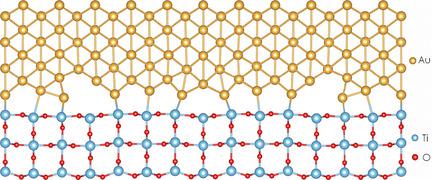当前位置:
X-MOL 学术
›
ChemCatChem
›
论文详情
Our official English website, www.x-mol.net, welcomes your
feedback! (Note: you will need to create a separate account there.)
Strong Metal Support Interaction as a Key Factor of Au Activation in CO Oxidation
ChemCatChem ( IF 3.8 ) Pub Date : 2018-08-02 , DOI: 10.1002/cctc.201800972 Alexander Yu. Klyushin 1, 2 , Travis E. Jones 1 , Thomas Lunkenbein 1 , Pierre Kube 1 , Xuan Li 1 , Michael Hävecker 3 , Axel Knop-Gericke 1 , Robert Schlögl 1, 2, 3
ChemCatChem ( IF 3.8 ) Pub Date : 2018-08-02 , DOI: 10.1002/cctc.201800972 Alexander Yu. Klyushin 1, 2 , Travis E. Jones 1 , Thomas Lunkenbein 1 , Pierre Kube 1 , Xuan Li 1 , Michael Hävecker 3 , Axel Knop-Gericke 1 , Robert Schlögl 1, 2, 3
Affiliation

|
We address the question of the nature of Au NP activation and through a combination of experimental and theoretical techniques. In‐situ XPS measurements of Au/TiO2 during CO oxidation show high catalytic activity can be associated with the formation of an ionic Au species. DFT calculations performed on Au/TiO2 show that the formation of such ionic Au is due to a strong metal‐support interaction between Au and reduced and defective TiO2. TEM supports these findings, indicating the formation of an overlayer of transition metal oxide support on Au NPs after CO oxidation. These results suggest TiO2 lattice oxygen is involved directly in CO oxidation, which was confirmed with labeled 18O2 experiments.
中文翻译:

强金属载体相互作用是CO氧化中Au活化的关键因素
我们通过实验和理论技术的结合,解决了金纳米颗粒活化性质的问题。在CO氧化过程中Au / TiO 2的原位XPS测量表明,高催化活性可能与离子型Au物种的形成有关。在Au / TiO 2上进行的DFT计算表明,这种离子型Au的形成是由于Au与还原的和有缺陷的TiO 2之间强烈的金属-载体相互作用。TEM支持了这些发现,表明在CO氧化后在Au NP上形成了过渡金属氧化物载体的覆盖层。这些结果表明,TiO 2晶格中的氧直接参与了CO的氧化,这一点已通过标记的18 O 2得以证实 实验。
更新日期:2018-08-02
中文翻译:

强金属载体相互作用是CO氧化中Au活化的关键因素
我们通过实验和理论技术的结合,解决了金纳米颗粒活化性质的问题。在CO氧化过程中Au / TiO 2的原位XPS测量表明,高催化活性可能与离子型Au物种的形成有关。在Au / TiO 2上进行的DFT计算表明,这种离子型Au的形成是由于Au与还原的和有缺陷的TiO 2之间强烈的金属-载体相互作用。TEM支持了这些发现,表明在CO氧化后在Au NP上形成了过渡金属氧化物载体的覆盖层。这些结果表明,TiO 2晶格中的氧直接参与了CO的氧化,这一点已通过标记的18 O 2得以证实 实验。











































 京公网安备 11010802027423号
京公网安备 11010802027423号